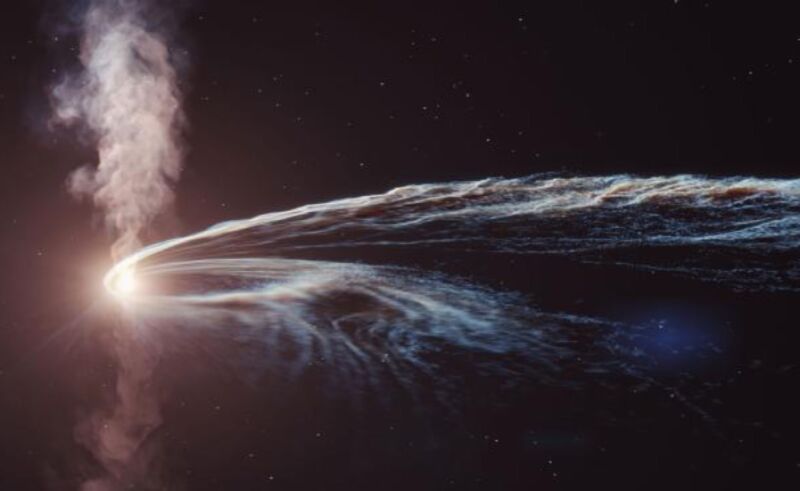
Enlarge / Artist’s illustration of a tidal disruption event where a supermassive black hole spaghettifies and gobbles down a star. (credit: DESY, Science Communication Lab)
Back in October 2018, astronomers spotted the bright flare of a star being shredded by a black hole 20 million times more massive than our Sun 665 million light years away—a so-called "tidal disruption event" (TDE) dubbed AT2018hyz. But otherwise the event seemed unremarkable, and after a few months of monitoring the black hole in visible light, the TDE faded, and astronomers moved on. But AT2018hyz had a surprise in store. Nearly three years later, the black hole suddenly reanimated, baffling astronomers, according to a new paper published in The Astrophysical Journal.
“This caught us completely by surprise—no one has ever seen anything like this before,” said co-author Yvette Cendes of the Harvard-Smithsonian Center for Astrophysics. She likened the unusual black hole feeding behavior to “burping” after a heavy meal. "It's as if this black hole has started abruptly burping out a bunch of material from the star it ate years ago." This suggests that delayed outflow is more common than astronomers previously expected. The group will continue to monitor this TDE as it evolves, and a systematic study of a much larger sample of TDEs is underway.
As we've reported previously, it's a popular misconception that black holes behave like cosmic vacuum cleaners, ravenously sucking up any matter in their surroundings. In reality, only stuff that passes beyond the event horizon—including light—is swallowed up and can't escape, although black holes are also messy eaters. That means that part of an object's matter is actually ejected out in a powerful jet.
No comments:
Post a Comment